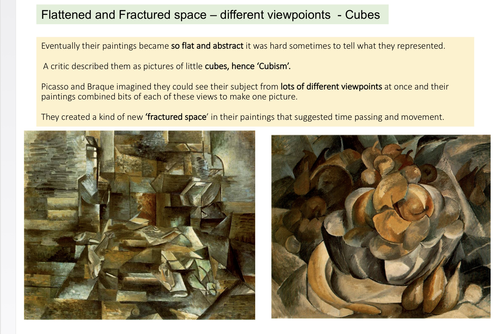








This is a short visual display of how perspective developed from the early Medieval paintings through the key artists in the Renaissance: Giotto, Masaccio, Brunelleschi, Leonardo and then the Dutch artists and then to Cubism.
It shows you how artists have developed a window on a flat space through first of all basic means of overlapping, placement, symmetry and story telling and how this changed with Giotto and Masaccio (use of light and dark shading) and how Brunelleschi brought the grid and camera obscura to develop a window to the world in his paintings.
It further looks at Leonardo’s example and how he developed this linear perspective but then continues with the development of chair-scuro (light to dark shading) and their oil paint blending to continue developing the illusion of reality on a flat surface in their Still life paintings.
The presentation ends with how this has now returned to a flat surface and the surface been treated as a wall again with the work of Cezanne and his brushwork painting and underpainting to develop an illusion of space.
Cubism and its multiple viewpoints show how Art has now returned to a wall and Braque and Picasso’s work show how they have now fractured space and how the importance of creating an illusion of space on a 2D surface was not a priority but instead it was the overall meaning and idea that is important.
Get this resource as part of a bundle and save up to 47%
A bundle is a package of resources grouped together to teach a particular topic, or a series of lessons, in one place.
Something went wrong, please try again later.
This resource hasn't been reviewed yet
To ensure quality for our reviews, only customers who have purchased this resource can review it
Report this resourceto let us know if it violates our terms and conditions.
Our customer service team will review your report and will be in touch.